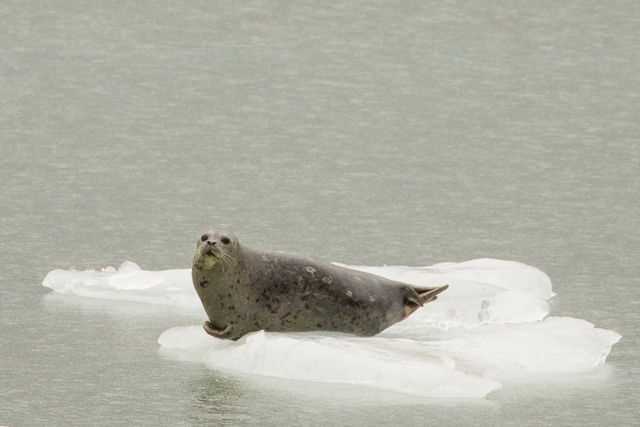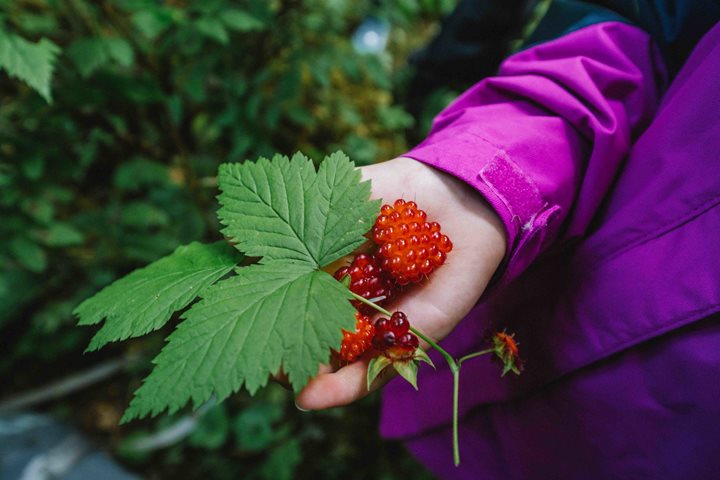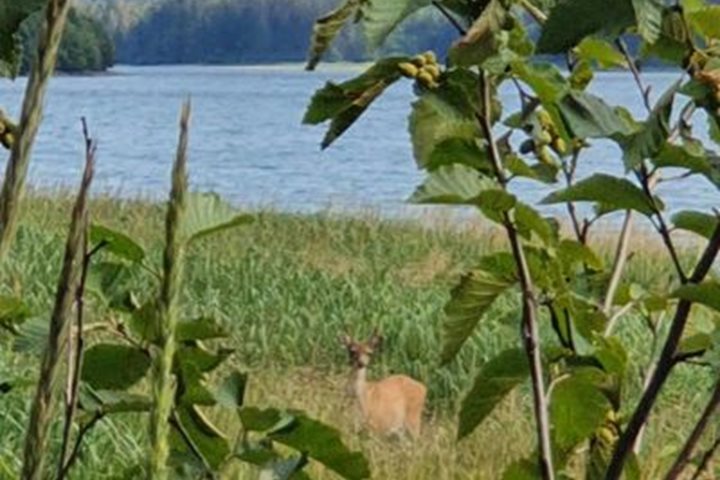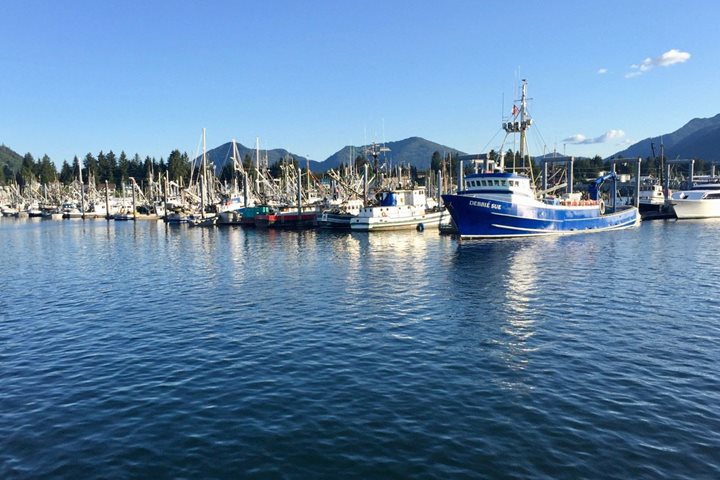National Geographic Quest crossed the imaginary line that divides Icy Strait from Glacier Bay and marks the southern boundary of the 3-million-acre Glacier Bay National Park sometime after midnight last night; the strict regulations of the park are well thought out, and only allow a specific number of different-sized vessels within the park every day. We arrived very early in the morning to Bartlett Cove to pick up a Tlingit Cultural Interpreter and a Park Ranger that traveled with us all day long and helped us appreciate the beauty and importance of this wonderful place even more.
The small South Marble Island was our first stop. There we watched a great variety of life, starting with the largest, noisiest, and most odoriferous species, the Steller sea lion. Many big males and immatures were scattered in several clusters throughout the island, mostly on the southern portion. Being the largest sea lion species in the world, the Steller is quite a formidable creature that dwarfed a visitor from more southern latitudes, a single California sea lion individual that I am sure was missing the warmer California summers. South Marble Island is an important nesting area of several marine bird species and we were able to watch a number of them, including black-legged kittiwakes, glaucous-winged gulls, common murres, pelagic cormorants, and tufted puffins. Even a single-horned puffin was spotted swimming around, making the day for the birders on board.
We spent the morning searching for wildlife and we were rewarded with the unusual sight of not one or two, but four brown bears together! Most likely a sow with her three second-year cubs—almost as big as she was, and they were peacefully feeding together. They will soon part ways and start independent lives but for now, they still had time for one more day together.
Another brown bear was discovered walking by itself along the beach, not far from the aptly-named Gloomy Knob where we found a small group of mountain goats. Then we headed towards the Lamplough Glacier and the John Hopkins Inlet. There we encountered more and more ice floating around and numerous harbor seals on larger floes; the vicinity of the John Hopkins Glacier is a well-known breeding and feeding area for the harbor seal. But the majestic glacier really impressed us with its mile-wide bulk, subtle colors and textures, and marked the climax of a marvelous day in Glacier Bay National Park.







